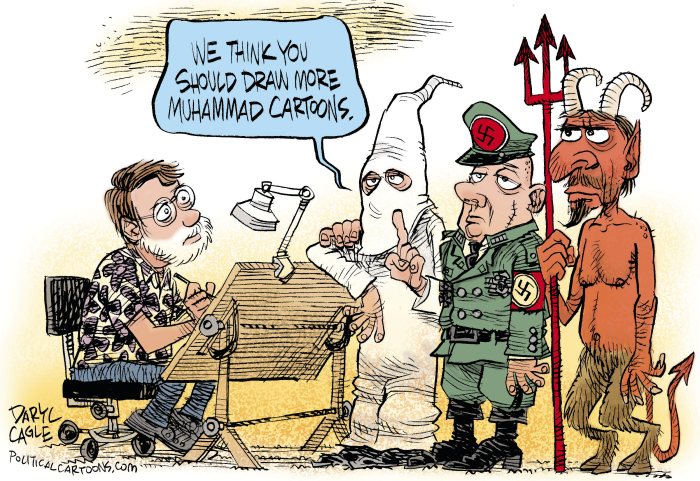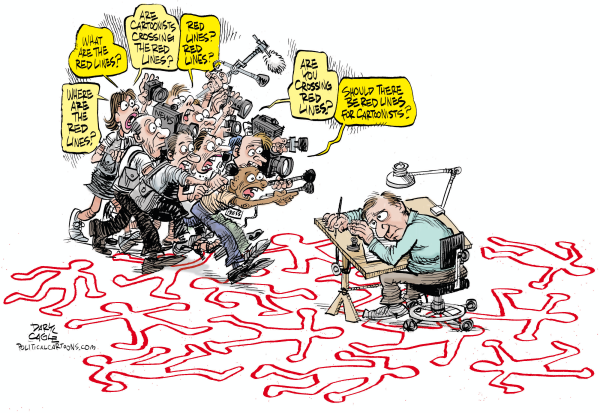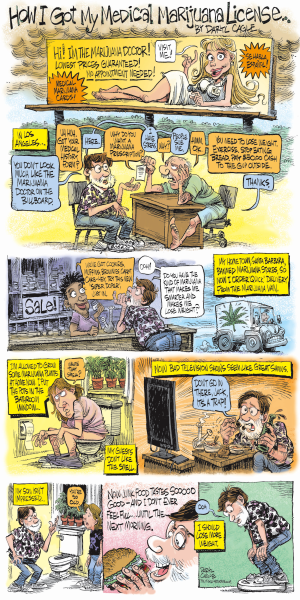
Veterans Day Cartoons to Warm an Editor’s Cold Heart
I run a syndicate, Caglecartoons.com, that distributes political cartoons to newspapers, and every year at this time we hear from editors complaining that there are few or no Veterans Day cartoons.
Some editors think of editorial cartoons as nothing more than little, topical jokes — this is troubling to political cartoonists who want to draw cartoons about solemn topics and bring a tear to the reader’s eye.
Unfortunately, editors for some of the biggest, most influential publications treat editorial cartoons as trivial jokes; a good example is Newsweek magazine, which likes to reprint cartoons that are like Jay Leno jokes, about a topic in the news but conveying no opinion that anyone would disagree with. Jay Leno jokes about the news all the time, and I have no idea what his personal opinions are.
Another wretched publication that diminishes editorial cartoons is The New York Times, which prints a weekly round-up of insipid cartoons under the title “Laugh Lines.” Don’t expect to see any thoughtful Veterans Day cartoons under the title “Laugh Lines.”
So, if a cartoonist wants to get his cartoons reprinted in The New York Times, Newsweek or some other big, national publication that likes funny, trivial jokes, he won’t be drawing any Veterans Day cartoons.
I have gathered a batch of some of my favorite Veterans Day cartoons from cartoonists who don’t care what New York Times and Newsweek editors think. These cartoons will bring a patriotic glow to even the dimmest editor as the cartoonists express their appreciation to our veterans.
Daryl Cagle is a political cartoonist and blogger for MSNBC.com; he is a past president of the National Cartoonists Society and his cartoons are syndicated to more than 850 newspapers, including the paper you are reading. Daryl’s books “The BIG Book of Campaign 2008 Political Cartoons” and “The Best Political Cartoons of the Year, 2010 Edition” are available in bookstores now.
















